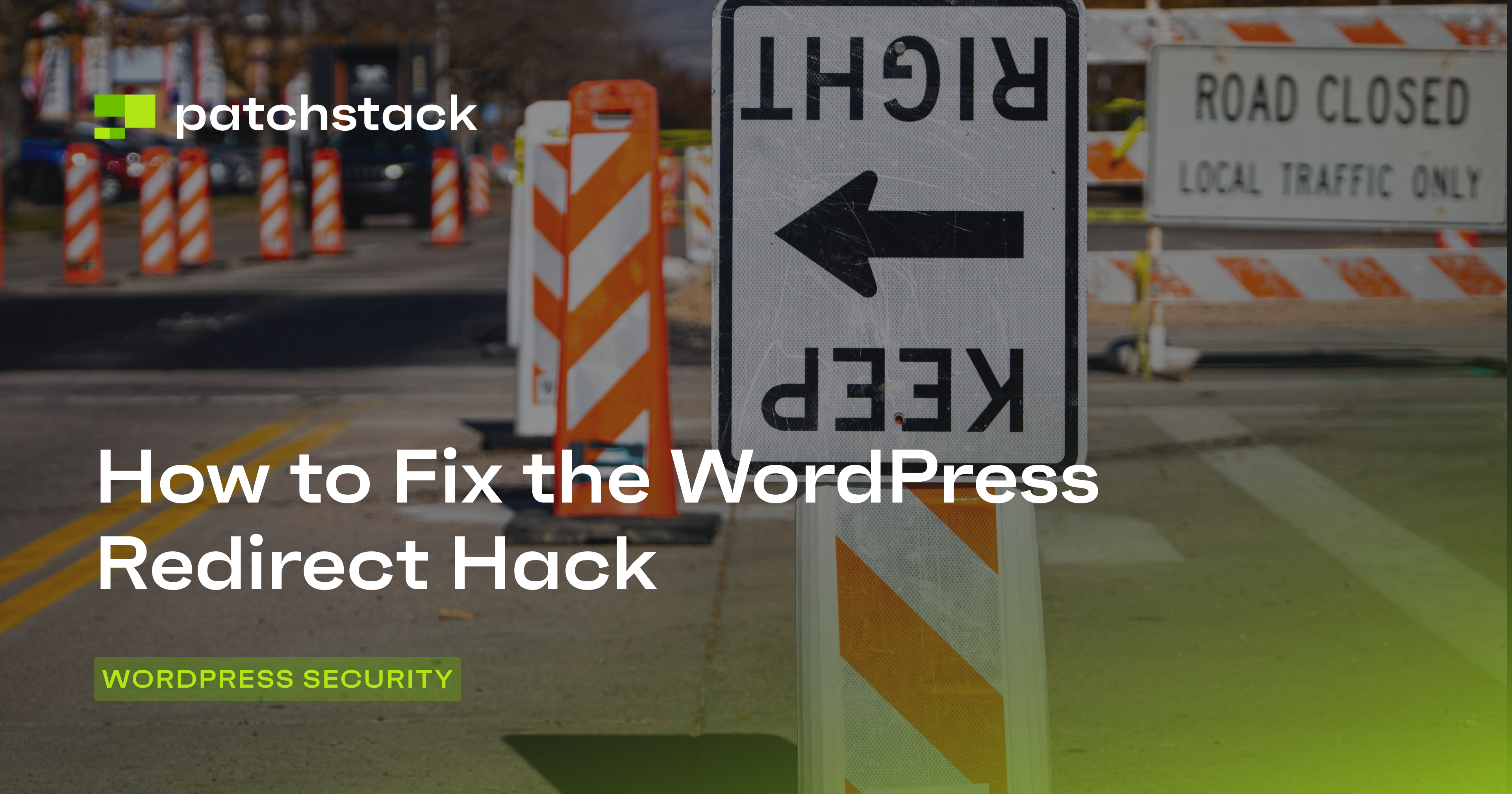This article will focus on how to block IPs, countries, and regions for Your WordPress website.
In this article, we will learn how to filter out unwanted visitors from your website based on their IP addresses or locations. There are several reasons to do this, including:
- Improving website performance
- Complying with legal regulations
- Targeting specific audiences
- Preventing spam and fraud
However, it is important to note before we dive in that this should not be considered a security measure and should instead be seen as a performance optimization or a business decision. You shouldn’t rely on blocking IPs and countries as a substitute for proper security practices.
In short, while it may be a temporary last resort if you can see a huge spike that is spiraling out of control from a specific IP address or even country to mitigate something that is already underway, it is not enough to consider your site reasonably protected (since it is relatively easy to work around these types of measures once the bad actors determine the pattern you are using to block them).
So, in this article, we’ll cover how to block IP addresses and countries in WordPress using several different methods and tools, such as plugins, .htaccess, cPanel, or Cloudflare. We will also detail the pros and cons of each method and tool, and offer some tips and best practices on how to block IPs and countries without affecting your user experience or SEO.
Let's get started!
Why Block IPs
When publishing a website, you’ll want to maximize the engagement of visitors with the content, and an increase in traffic to your site would certainly help. Therefore, blocking IPs, countries, or regions might seem counterintuitive at first – but it can be beneficial for your website. Here are some of the reasons:
- Blocking IPs can help you protect your website from specific threats or attacks that originate from certain IP addresses, such as brute force, DDoS, or phishing. For example, if you notice that a large number of failed login attempts are coming from a single IP address, you can block that IP address to prevent further attempts and secure your website.
- Blocking countries or regions can help you reduce the bandwidth costs or server load of your website by filtering out unwanted visitors based on their location. For example, if you have a website that is only relevant for a specific country or region, you can block the rest of the world to save resources and improve performance for those users in targetted locations.
- Blocking countries or regions can also help you comply with legal regulations, avoid censorship or sanctions, target specific markets or audiences, or prevent spam or fraud. For example, if you have a website that sells products or services that are not allowed or available in certain countries or regions, you can block those countries or regions to avoid legal issues or customer complaints.
Challenges with Blocking IPs
Blocking IPs, countries, or regions is not a security measure, but rather a performance optimization or a business decision.
One of the drawbacks and limitations of blocking IPs is that it can result in false positives, meaning that you might block legitimate visitors or bots by mistake. For example, if you block China’s country code (CN), you might also block visitors from Hong Kong (HK) or Taiwan (TW).
You need to rely on accurate and updated information to identify the IP addresses and their locations. This can be difficult and costly if you use third-party services or databases that may have errors or discrepancies.
You need to consider the impact of blocking IPs, countries, or regions on your SEO (search engine optimization) and user experience. This can affect your ranking and traffic if you block search engines or potential customers from accessing your website.
This can happen if you block an IP range that includes other users or services that you want to allow on your website, such as search engines, social media platforms, or email providers.
Another limitation of blocking IPs is that this approach can be easily bypassed by hackers or malicious actors who use dynamic IPs, VPNs, proxies, or TOR.
These techniques allow them to change their IP addresses frequently, or hide their true IP addresses behind another IP address. This makes it difficult and impractical to block them based on their IPs alone.
This is why blocking IPs, countries, or regions cannot be thought of as a security measure, but only as either a performance optimization or a business decision.
You should not rely on blocking IPs, countries, or regions as a substitute for proper security practices, such as updating your WordPress core, plugins, and themes, using strong passwords and two-factor authentication, installing a security plugin or firewall, and backing up your website regularly.
How To Block IPs From Accessing Your WordPress Site
In this section, we’ll provide a step-by-step guide on how to block IPs from accessing a WordPress website using several different methods and tools. We will also compare and contrast the pros and cons of each method and tool.
Using .htaccess (Advanced)
One of the methods you can use to block countries or regions from accessing your WordPress website is using the .htaccess file, which is a configuration file that controls the behavior of the Apache web server. You can edit the .htaccess file in the root directory of your WordPress website using a text editor or a FTP client.
To block countries or regions using .htaccess, you need to use Apache directives, such as Deny or Require, to specify which IP addresses are allowed or denied access to your website. You also need to use the IP addresses or masks of the visitors that you want to block or allow.
Here are some examples of how to block IPs using .htaccess rules based on their IP addresses or masks:
- To block a single IP address, use the following syntax:
Deny from <IP address>
For example, to block 192.168.1.1, use:Deny from 192.168.1.1 - To block multiple IP addresses, use the following syntax:
Deny from <IP address 1> <IP address 2> ...
For example, to block 192.168.1.1 and 192.168.1.2, use:Deny from 192.168.1.1 192.168.1.2 - To block an IP range, use the following syntax:
Deny from <IP address>/<CIDR notation>
The CIDR notation is a number that represents how many bits of the IP address are fixed and how many are variable. For example, /24 means that the first 24 bits of the IP address are fixed, and the last 8 bits are variable.
For example, to block all IPs from 192.168.1.0 to 192.168.1.255, use:Deny from 192.168.1.0/24 - To block an IP mask, use the following syntax:
Deny from <IP mask>
The IP mask is a wildcard character (*) that represents any number from 0 to 255.
For example, to block all IPs from 192.168, use:Deny from 192.168.*.*
Using Cloudflare
Another method to block countries or regions from accessing your WordPress website is by using Cloudflare. Cloudflare provides a firewall that can improve your website speed, security, and performance.
To use Cloudflare to block countries or regions, you need to sign up for a Cloudflare account and add your website as a site.
You also need to change your domain name servers (DNS) to point to Cloudflare’s servers. This will allow Cloudflare to serve your website content from its global network of servers and apply its firewall rules to your website traffic.
Here are instructions on how to do this:
- In the Cloudflare dashboard, click on the Firewall tab and then click on the Firewall Rules subtab. In the Firewall Rules page, click on the “Create a Firewall Rule” button.
- On the Create a Firewall Rule page, enter a name for your rule and then choose the condition and action for your rule. You can use the following fields to block countries or regions:
- Country: This field allows you to block or allow visitors based on their country of origin. You can enter the ISO code or name of the country that you want to block or allow. For example, to block China, you can enter either “CN” or “China”.
- IP Reputation: This field allows you to block or allow visitors based on their IP reputation score. The IP reputation score is a number between 0 and 100 that indicates how likely an IP address is to be malicious or abusive. The lower the score, the higher the risk. For example, to block visitors with a high-risk score, you can enter less than 10.
- Action: This field allows you to choose what action to take when the condition is met. You can choose from several actions, such as Block, Challenge, Allow, Bypass, or Log. For example, to block visitors who match the condition, you can choose Block.
- Click on the “Deploy” button to save and activate your rule, after which you will see a confirmation message that your rule has been deployed. To view or edit your firewall rules, go back to the Firewall Rules page. You will see a list of your firewall rules, along with their names, conditions, actions, statuses, and hit counts. You can then click on the Edit icon next to any rule to modify it.
However, this method might not be feasible if you are already using another CDN or if you don’t want to serve your website using Cloudflare. Using another CDN might cause conflicts or compatibility issues with Cloudflare’s features and settings. Therefore, you should carefully weigh the pros and cons of using Cloudflare before deciding to use it to block IPs, countries, or regions from accessing your WordPress website.
Using Patchstack (Recommended)
So far, we have seen that blocking certain countries or IPs via directly editing configuration files is tedious and can break your site even with the smallest of mistakes. However, if you are using Patchstack, you can edit these settings within the comfort of your own WordPress dashboard.
Patchstack is a WordPress security management platform that gives website makers information about software vulnerabilities, and protection against attempts to exploit those vulnerabilities.
Aside from vulnerability management, it includes a few more generic hardening features, such as a firewall that blocks malicious requests before they are processed by WordPress, including the option to block IP addresses. One of the features that Patchstack offers is Country Blocking & IP Whitelist/Blacklist. This feature allows you to block IPs, countries, or regions from accessing your WordPress website with ease and convenience. You can access this feature from your WordPress dashboard by going to Patchstack > Firewall > Country Blocking & IP Whitelist/Blacklist.

As you can see from the screenshot, you can enable or disable the Country Blocking feature. To block or allow selected countries or regions, just select the countries from the drop-down menu – and Patchstack will take care of the rest.
You can also add IP addresses to the Block IP List or the Whitelist, using different formats and rules. Patchstack will then apply these settings to your website to block or allow visitors based on their IPs, countries, or regions.
Final Thoughts
We hope you’ve found this tutorial helpful and are now armed with everything from the benefits of blocking IPs and countries – along with a few different methods to implement these measures, depending on what you’re comfortable with and your preferred setup.
If you have any questions for us, feel free to reach out to our team using the chat widget accessible in the bottom right-hand corner of any page of our website. We’re here to help. 🤝
While you’re here – seeing as there is a good chance you’re interested in the security of your WordPress website – for more on WordPress security, read our complete guide to WordPress security here. In summary:
No website will ever be 100% secure. For starters, there are ~ 60,000 plugins available on the WordPress plugin repository – a few of which actively audit their codebase for potential security issues. And this is why we built Patchstack.
Automated web application protection for site owners, developers, and agencies.
Most people in WordPress either:
- Passively worry about their site (and whether they’re taking precautions)
- Don’t worry and take little precautions (and are the most at risk)
- Spend more time than they should manually secure their sites (often enterprise companies that do code reviews all manually)
Fortunately – thanks to Patchstack, you don’t have to be, with:
- Notifications for new security vulnerabilities
- Automated protection with vPatches and security hardening
- Remotely managed software and updates with automation
- And much, much more





